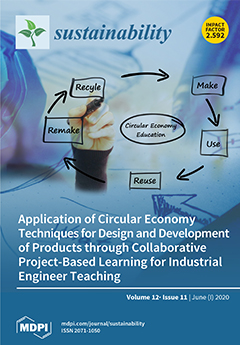Green architecture, including green roofs, can limit the effects of urbanization. Green roofs soften the thermal effect in urban conditions, especially considering the significant increase in the European and global population and that a significant share of the age group, mainly the elderly
[...] Read more.
Green architecture, including green roofs, can limit the effects of urbanization. Green roofs soften the thermal effect in urban conditions, especially considering the significant increase in the European and global population and that a significant share of the age group, mainly the elderly is exposed to diseases caused by high temperatures. We studied runoff and the quality of water from green roof systems in Lower Silesia, within the area of the Agro and Hydrometeorology Station Wrocław-Swojec, in the years 2012–2016. In the study, two systems with a vegetation layer based on light expanded clay aggregate and perlite were analyzed. The studies were based on the assessment of peak flow reduction, rainwater volume preservation and peak wave reduction. The calculated maximum retention performance indicator, relative to rainfall, for perlite surfaces was up to 65%, and in relation to the control surface up to 49%. In addition, the quality of water from runoff was estimated in the conditions of annual atmospheric deposition, taking into account such indicators as electrolytic conductivity; the content of N, NO
3, NO
2, NH
4, P, PO
4; and the content of metals, Cu, Zn, Pb and Cd. The load of total nitrogen exceeded the values of concentration in rainwater and amounted to 7.17 and 13.01 mg∙L
−1 for leca and perlite, respectively. In the case of the metal content, significantly higher concentrations of copper and zinc from green surfaces were observed in relation to precipitation. For surfaces with perlite, these were 320 mg∙L
−1 and 241 mg∙L
−1, respectively, with rainwater concentrations of 50 and 31 mg∙L
−1.
Full article





